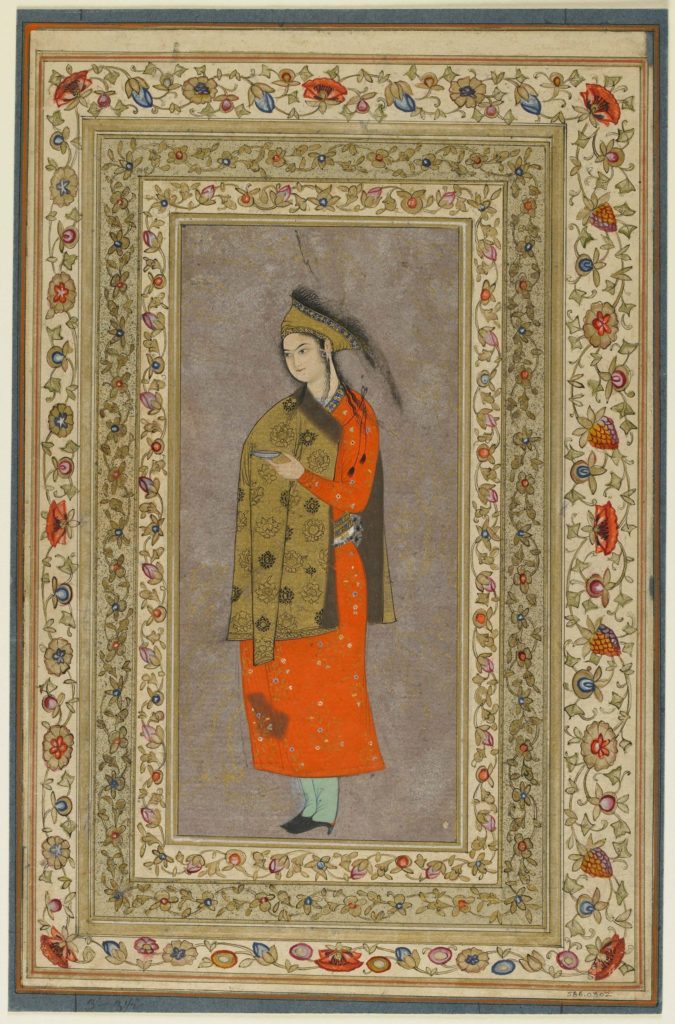
By Sheila Wickouski
The Smithsonian’s National Museum of Asian Art reopened on December 18 with a special exhibition, Fashioning an Empire: Safavid Textiles from the Museum of Islamic Art, Doha.
While the artistic traditions of the Safavid empire extended through architecture, poetry, and philosophy, this exhibition focuses on how textiles served as powerful intermediaries for new artistic ideas and global exchange.
Safavid luxury textiles, including silks made with gilt silver or silver-covered threads, were the most expensive fabric on the European market. In the exhibition, some of the textiles carry stylized designs while others are inspired by more naturalistic patterns, inspired by Indian models.
Maps from the seventeenth century show trade routes expanding through Iran, from India to Europe, but it is these art works which reveal connections.
Three portraits on loan from the Museum of Islamic Art in Doha are indicators of the respective subjects’ status in appearances as well as adaptation based on European formats and techniques.
The full-length oil painting, Portrait of Shah Abbas Safavi II, features a variety of fabrics depicted in his layered loose garments and distinct turban.
Portrait of a Gentleman represents a European envoy or possibly a Georgian or Armenian merchant. Dressed in the latest fashion, with fur-trimmed coat, he leans on a walking stick, with a small white dog at his feet, posed before an open window with a view of a bucolic, receding landscape.
The richly dressed woman in Portrait of an Armenian Lady, also poses before an open window. She wears a fine silver-ground brocaded robe with a sleeveless velvet coat, probably Italian in origin, and holds an elaborate Venetian wine glass. Her imaginary setting is equally grand, with Italian marble floors, an ornate column, and an extravagant vase. Like the gentleman, she is familiar with European fashions and luxury items.
There is a fine selection of illustrated manuscript paintings, like the opaque watercolor and gold on paper Ka’us Khan Receives a Robe of Honor from Mun’im Khan from the collection of the National Museum of Asian Art on view in the exhibition. Pictured in a tented city, the Afghan Da’vud Khan receives a sumptuous gold coat as a sign of allegiance to his host Mu’min Khan. The work marks not only the historic occasion but indicates the elite status of luxury textiles.
Portrait of a Youth, Khusraw-Sultan Holding a Falcon and Woman by a Fountain are painted manuscripts that you must see during your visit to appreciate the delightful opaque watercolors with ink and gold.
Perhaps the most familiar textiles in this exhibition are the brilliant-colored Safavid carpets. Used to cover the ground inside private and public buildings and to define outdoor gathering spaces, these vibrant textiles are knotted in soft wool, fine cotton, and costly silk. In competition with Ottoman exports and Mughal works, the Safavid designs combined palmettes with scrolling vines, curling lancet leaves, and stylized cloud bands, usually red, surrounded by either blue or green borders.
Fashioning an Empire: Safavid Textiles from the Museum of Islamic Art, Doha will be on view through May 15, 2022.

